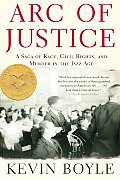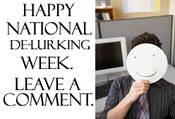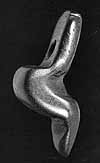
I'm the target demographic for Darla Shine's recent self-help book titled
Happy Housewives. I'm the right age, I gave up a career and professional training to stay home with two young kids, and I do the majority of the housework in our now seemingly June Cleaveresque household. I don't think or feel like June Cleaver, though. As I read Shine's book, I did wonder if some of my distaste for the book might stem from the fact that I am not as wealthy nor as conservative as the stay-at-home moms she depicts. I think that it could have been more accurately titled
Happy Rich Republican Housewives.
There were some good things about this book. It is an honest and heartfelt account of one woman's life and how she took control of the aspects of it that were making her "a whining, miserable, desperate housewife." It is simply written and a quick (sometimes humorous) read, and includes some good recipes and gardening advice. If the comments on amazon.com and a couple of SAH-mom blogs (see
MotherSong and
The Politically Incorrect Mom) are any indication, it has proven inspirational to many women.
However. There was a lot that really disturbed me in this happy, "I'm just talking to my girls" motivational book. First and foremost, as Jen has elaborated on in her
LiteraryMama blog essays on
My Happy Inner Housewife and
My Inner Housewife: Shine Responds, there is the assertion that staying at home with your kids is always superior to working outside the home. There are no qualifications to this statement. (How about working while your kids are in school? How about part-time work? How about a stay-at-home dad?):
“Many of us are torn between our careers and our families. We work very hard, only to have to give it all up. What choice do you have? This is really what you were meant to do. If you made the choice to get pregnant, you should make the choice to stay home with that baby if you can afford to, and I think most of you could afford to.” (p. 19 in Happy Housewives, henceforth HH, emphasis mine).
I also found the advice on being a housewife (aka SAH-mom) unsettling. Darla states that she is unequivocally against the whole
"Desperate Housewives" idea of competitive mothering, but she sends very mixed messages with her advice:
“I think one of the biggest reasons housewives have a bad image is that a lot of moms have let themselves go. Admit it, girls. Most housewives are in desperate need of a makeover – out-of-date hairstyles, jeans that should have been thrown out years ago, and worst of all, what I really cannot handle, no makeup!”, p. 32, HH.
Yes, I'm sitting here wearing jeans with holes, an old flannel shirt, and no make-up. This is what I wore to work as a professional archaeologist, however, and my husband still wants to have sex with me and I haven't been rejected by the other moms on the playground or my
local Mothers & More group.
“We look cute, we’re thin, we’re in style, and we’re hot mamas! At least we think so. We’re constantly on top of each other, policing each other to make sure we don’t fall off the wagon. We force each other to look good……If you need help, look at what the women are wearing in the magazines. Real women in magazines like More, Redbook, Ladies’ Home Journal, Woman’s Day, and InStyle.”, p. 33, HH.
Thankfully, I can't imagine any of my friends policing what I wear. And I was under the impression that the women shown in most magazines were media creations, not candid snapshots of real women. Even the women in that Dove
Campaign for Real Beauty are not really real, if you know what I mean.
“The whole mommy clique thing is stronger than ever in the suburbs. I have been really studying this phenomenon, and it’s a clear fashion thing. I notice that the cute, stylish moms hang out with other cute, stylish moms, and the frumpy moms hang out with the other frumpy moms. I told this to my girlfriend, and she told me months later that that statement alone got her off her bottom and to the gym. Now she has a slew of new girlfriends, and she’s in the A-list mommy clique – which is stupid, I know, but it’s just the way it is. So look good, don’t be a bitch, and maybe you could be the new popular mom in town.”, p. 164, HH.
This makes Darla's rhetorical question on pg. 31 of HH “Am I shallow? Yes, a bit.” more than a little funny.
“I’ve often noticed in grocery stores that it’s the heavy women who are buying a whole lot of junk. The other day when I was grocery shopping I noticed the woman in line in front of me loading a ton of processed snacks onto the checkout counter….She was about eighty pounds overweight, and I wanted to shake her. Her son came up behind me to stand near his mother; he was about twelve years old and at least twenty pounds overweight. I was so angry that I wanted to smash my cart into her big fat ass.” p. 39, HH.
Didn't this bother anyone but me? Wasn't there an editor somewhere that said, "Honey, this makes your statements about not being a bitch and not being in a mommy clique look just bizarre, even if you follow it up with a section about being healthy and exercising and eating organic foods? And what's with that sentence on ridding yourself of toxins and parasites by simply changing your diet?" What
parasites? If I get tapeworm or
Shigella or any other parasites, you can bet I'll do more than change my diet.
The parts in this book that refer to
men are the parts that really distressed me, though, and these are the sections that made me think of that Victorian "separate spheres" ideology, and how similar
Happy Housewives is to the "
Cult of Domesticity" of the 19th and
early 20th centuries (I'll save further comparisons for another blog post, since this may already be straining your attention span). These are the parts that I couldn't wait to read aloud to my husband:
“The secret is that men are simple. They want only three things in life: attention, appreciation and sex. If they cannot get these three things from you, they will either look someplace else or become miserable bastards who annoy you every day of your life.” p. 55, HH.
“Ladies, you may think no one out there would want your overweight, sloppy husband who leaves his underwear on the floor and pees all over the toilet bowl, but I promise you there’s another woman willing to jump into your side of the bed.” p. 54, HH.
“Last year one of my best friends wanted a new dining room set, but her husband was not opening his wallet. I told her to go home, pay some attention to him, act interested in him, initiate some romance, do some nasty deeds that only married couples should do, and guess what? Two weeks later she had the furniture – and a new diamond ring to boot.” p. 57, HH.
“And ladies, I advise you to leave the baby with your girlfriend or your mother instead of your husband [snipped out story about her getting highlights and getting called by her dh five times]…You get the idea, girls? I would have had a very peaceful afternoon if my mother or Dana had taken care of the kids. They would have improvised. Men are just not capable of that. Sorry, guys.” p. 174, HH.
“Why do so many women insist on doing everything with their husbands? I say have sex together, and that is pretty much all you need to do. Really, sometimes communicating with your husband is overrated. I have my girlfriends for that!” p. 65, HH.
Now, you may argue that these quotes are taken out of context. But I didn't see anything in the context that negated the meaning of these statements, which I think speak for themselves. They reveal an understanding of gender relations that is very different from the one I hold, to put it mildly.
Although Darla is very big on female solidarity (and talks often about the support of her girlfriends), she feels that feminism has ignored (if not actively disrespected) mothers. I certainly agree with her that mothers deserve more respect and social recognition, especially for caregiving roles, but I personally didn't find the resources or inspiration for changing this attitude in
Happy Housewives. Reading it made me feel desperate about communicating with other mothers, though. Instead of following Darla's ten easy steps "to stop being desperate - and start getting happy", I'd advocate that other mothers check out the following resources that don't combine motherhood with a new kind of "True Womanhood":














